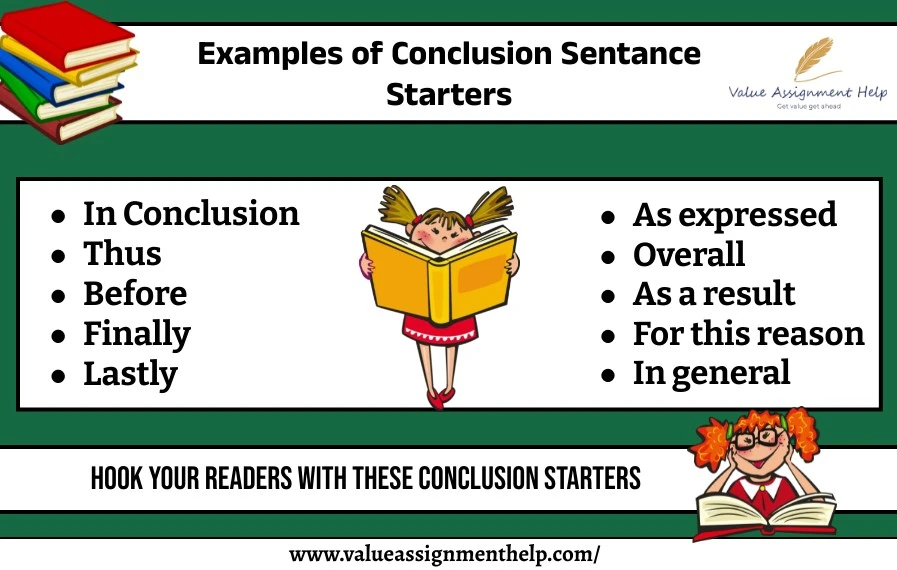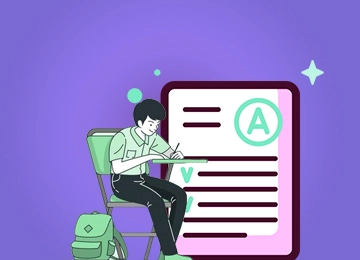
Search Assignments
Table of Contents
Our Experts

Search Assignments

Customers Reviews
By the time you reach the last paragraph of your paper, you've done a lot of work on your essay, so all you want to do is wrap it up as quickly as possible. However, you've already given a great introduction, proven your argument, and structured the whole piece as supposed – now is the time to make a binding concluding paragraph?
The conclusion of an essay is not just the last paragraph of an academic paper where you summarise your thesis and critical arguments. A concluding paragraph is also your chance to make a final impression on your audience.
A conclusion is a final piece of writing in a research paper, essay, or article summarising the entire work. The conclusion paragraph should retell your thesis, summarise the essential supporting ideas you discussed throughout the work, and provide your final impression. This final summary should also contain the moral of your story or the revelation of a more profound truth. A reasonable conclusion will summarise your main points and final thoughts, combining all relevant information with emotional appeal for an ending statement that resonates with your readers.

Although different sources cite different types of findings, they all serve one of these three primary functions:
Summarisation:
This style is often used while writing about technical topics with a more clinical tone, such as surveys, definitions, and reports. Because it explains the essay's main ideas, it is often used in longer pieces where readers will need to be reminded of its main points. Thus, it should avoid reflexive references or subjective thoughts (such as "in my opinion" or "I think").
Editorialization is mainly used in essays with a controversial topic, a personal connection or an appeal to persuade the reader. This style incorporates the author's commentary about the subject matter and often expresses his investment in the discussed issue. This conclusion will use an anecdote and a conversational tone to draw attention to concerns, interpretations, personal beliefs, politics or feelings.
They are often used in essays that approach a particular issue that is part of a more complex topic; an external conclusion transition to a related but separate topic that prompts readers to develop the discussion further. It is often treated as a new introduction that includes another thesis entirely, allowing development in another possible dissertation.
Your students need to write an effective closing sentence to drive home the endpoint. Some features include:
As a writer, you should keep in mind that closing sentences may look different for different types of writing. Examples of this type of writing include description, comparison and contrast, and argument.
The closing sentence of a narrative paragraph should emphasise the moral lesson to the audience. As with descriptive paragraphs, the closing sentence helps tie everything together by emphasising the details from the topic sentence, using separate words, and summarising supporting facts. When writing a final sentence for a compare and contrast paragraph, you will want to rephrase both topics by pointing out the various similarities and differences discussed. The closing sentence in an argument paragraph will summarise the argument being made. This can reaffirm why the argument is correct and lead to consequences if the argument is not heeded.
An effective conclusion is drawn by following these steps:
An effective conclusion brings the reader back to the main point, reminding the reader of the essay's purpose. However, avoid repeating the thesis verbatim. Instead, explain your reasoning a bit while maintaining the primary point.
In addition to reiterating your thesis, you should also reiterate the points you made throughout the paper. But instead of repeating the paper's arguments, summarise the ideas.
It is often practical to return to the topics of the introduction, giving the reader a strong sense of the conclusion. You can accomplish this by using similar concepts, returning to the original landscape, or incorporating the same imagery.
Your conclusion should give the reader a solution, an insight, further study, or a call to action. What are the implications of your argument? Why should anyone care? You'll want to answer these questions here and leave your audience with something to think about.
Don’t get stressed, as your best conclusion can earn you the grades with some of the keywords, and once you can answer the pattern given below.
Apart from the numerous conclusion starters and pointers, a few initiation quotes deserve your attention. Avoid direct speech and always try to follow an elaborative approach like - the study/ the research/ the facts concludes that -
Few Additional Conclusion Starters
Implementing one strategy is not enough, but you also need to consider a few more conditions as below:
There are many effective conclusion starters you can apply to any writing, an essay or a dissertation. Also, it doesn't matter what topic you're writing about, but your conclusion should be good enough to attract the audience. If you don't want to lose the point of your essay, you should consider writing it skillfully.
What's working so hard on your essay when you can't impress your audience?
Think again and take action suggested below:
When beginning your conclusion, please focus on the primary purpose of your essay as you need it to be appropriate. Although there are many suggestions above, this does not mean that you can choose one; instead, choose the one that serves your purpose.




No Comments